Tokyo Food Guide 2025: Top 5 Foods You Need to Try
Are you a foodie visiting Tokyo and looking for the best bites to eat in Tokyo for 2025? If so, this is the perfect guide for you!
When we give tours here at Ninja Food Tours, people often ask us a lot of questions. These include, “Do you have local restaurant recommendations?” “What kind of traditional Japanese food can I get in Tokyo?” or “Can you tell me about Japanese food culture?”.
Those questions will be answered right here in this article! No need to spend tons of time researching, we got you covered. Make sure to check out our other articles as well.
Here is our list of 5 foods you must try while in Tokyo. We will also provide lists of restaurants, some only known by the locals, to go along with the food as we go through this Tokyo Food Guide.
Be sure to leave a comment below to let us know what you think about the recommended restaurants if you decide to go!
Also, check out our blog post for recommendations of select restaurants in Tokyo. If you already know the basics, try our online Japanese Food Trivia Night. It’s a great experience with friends and family.
1. Sushi
You simply cannot ignore sushi when visiting Japan, but especially when visiting Tokyo. The fish market (Tsukiji fish market/Toyosu fish market) brings tons of fresh seafood from all over Japan and from around the world. It is the biggest fish market in the world!
There are also about 30 Michelin-starred sushi restaurants in Tokyo alone. But do you really want to spend all of your vacation money on just one meal good?
Don’t worry, this Tokyo food guide will give you tons of ideas on where to go and how to enjoy sushi in Tokyo without breaking the bank.
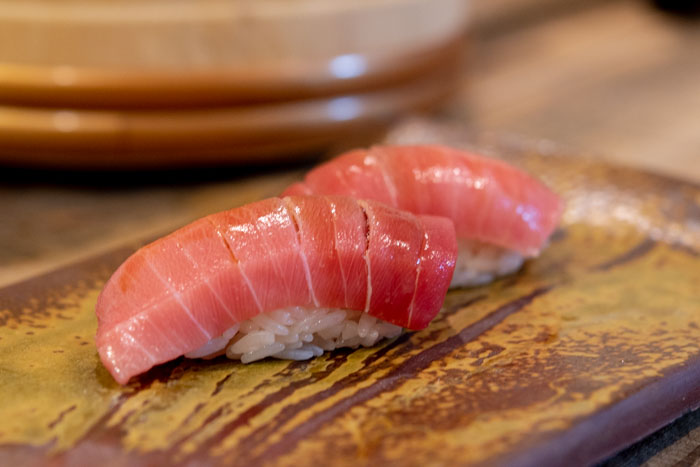
Where to go for Sushi in Tokyo
- Sushi no Midori (Ginza/Akasaka area)
Sushi no Midori is a super popular sushi restaurant with multiple locations in Tokyo (Ginza, Akasaka, and Shibuya). They serve high-quality sushi at a reasonable price. The sushi they make tastes great and is always elegantly prepared to also look great!
If you don’t want to wait in line, be sure to make a reservation. For the best chances in line, avoid weekends and peak times (e.g. 12 pm and 7 pm).
- Mantenzushi (Tokyo Station / Nihonbashi)
At Mantenzushi, they serve a lunch omakase set for only 4,400 JPY and a larger dinner omakase set for 8,800 JPY. Both of these omakase sets are great quantity and quality for the price! This place used to be popular only among locals, but now a lot of foreign tourists visit this restaurant as well.
Go there with a small party (2-3 people) to sit down at the sushi counter for a great experience. Reservations are highly recommended. They have two locations, one around Tokyo Station and one in the Nihonbashi area, but it is easier to make reservations at the Nihonbashi location.
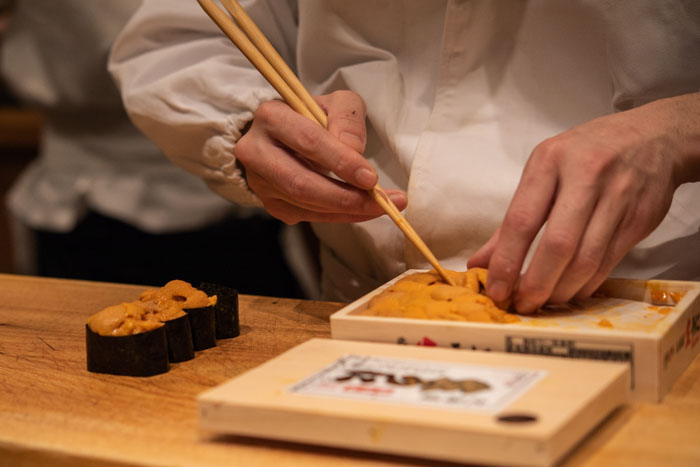
Also, if you plan on going to the Tsukiji fish market, you will find tons of sushi restaurants in the market, including Sushi Dai, Daiwa sushi, and Sushizanmai. It is typically a 2+ hour wait to eat at the first two places in the morning if you want to eat at the fish market. They are actually in the outer part of the market, called Jogai.
Is it really worth the wait? Some people say yes! However, you can find high-quality sushi all throughout Tokyo, so there is no pressure to wait in line here.
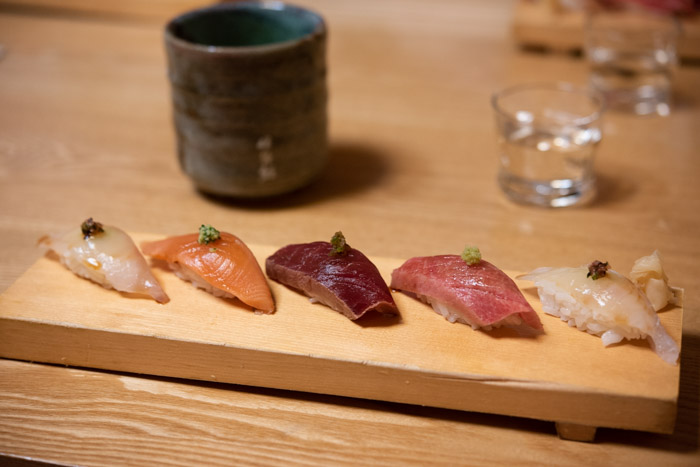
How to eat sushi
There are no strict rules as far as how to eat sushi properly, although there are a few things to keep in mind.
Using chopsticks v.s. Using your hands
Either works. If you go to a good sushi restaurant and eat at the sushi counter, the sushi chef will make sushi differently depending on how you eat sushi.
If you are using chopsticks, he will make sushi a bit more firm so that the rice does not crumble while eating.
How to dip sushi in soy sauce
Sometimes sushi is pre-seasoned with salt or soy sauce when served. Please eat the sushi as instructed by the sushi chef, since this is what the sushi chef thinks is the best way to eat the certain sushi (e.g. white fish with sea salt). If it is not pre-seasoned, flip your sushi piece over and dip the fish side into the soy sauce, and make sure to not dip the rice side into the soy sauce. This is to avoid the rice absorbing too much soy sauce and making the sushi too salty.
Do you want to add wasabi as well? A lot of people like to mix the wasabi with soy sauce, but it is actually much better to not mix it. Mixing it ruins the taste of both the wasabi and soy sauce. Instead, put a little dollop of wasabi on the fish before eating.
Time to eat
Sushi tastes the best right after it is served to you, so please eat the sushi right away. If you happen to be sitting at the sushi counter, make sure to order as you go, rather than all at once. This assures fresh sushi every time!
Also, when you eat sushi the, flip it so the fish side faces your tongue so that you taste the fish better, rather than the rice.
Of course, these are just suggestions, so feel free to forget all these rules and enjoy sushi in your own way! Enjoying the sushi.
Creating your own sushi
You can also try creating your own interesting sushi roll in addition to eating a traditional sushi course meal in Japan. Here is an example:
If you are looking to buy professional-quality Japanese kitchenware, take a look at the Ninja Kitchen Market to shop online so that you don’t have to carry around heavy ceramic ramen bowls across Japan.
2. Yakitori (grilled chicken skewers)
This is a simple but traditional Japanese way of cooking that can be eaten in many different ways. Yakitori literally means “cooked chicken”, and it typically consists of some part of a chicken that is skewered onto sticks and cooked over a charcoal grill. This not only gives the chicken a nice grilled taste, but also makes the meat crispy on the outside and tender on the inside.
The yakitori seasoning usually consists of either salt or a savory tare sauce made from soy sauce, dashi broth, and vinegar.
You should definitely try both the salt seasoning and the tare sauce at first, and then choose your favorite after. I recommend the salt seasoning at good yakitori restaurants if you want to taste the natural flavors of the high-quality ingredients.
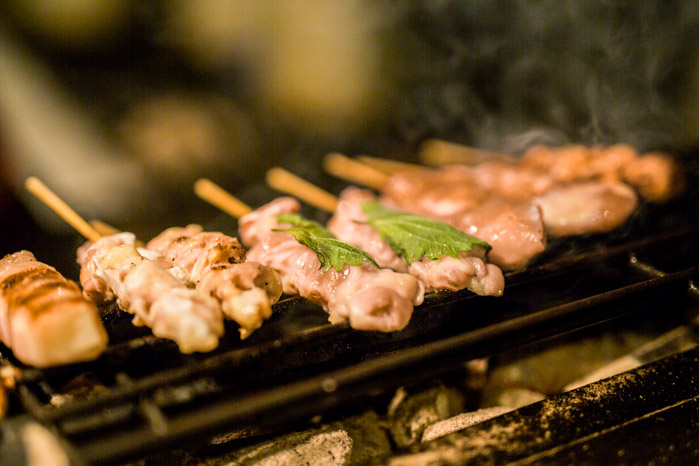
There are many different chicken parts that are used for yakitori, including:
- Momo (chicken thighs)
- Negima (chicken breast and spring onions)
- Tsukune (chicken meatballs)
- Kawa (chicken skin)
- Bonjiri (chicken tail)
- Liver
- Hatsu (chicken heart)
- Sunagimo (gizzard)
- Nankotsu (cartilage)
- Seseri (neck meat)
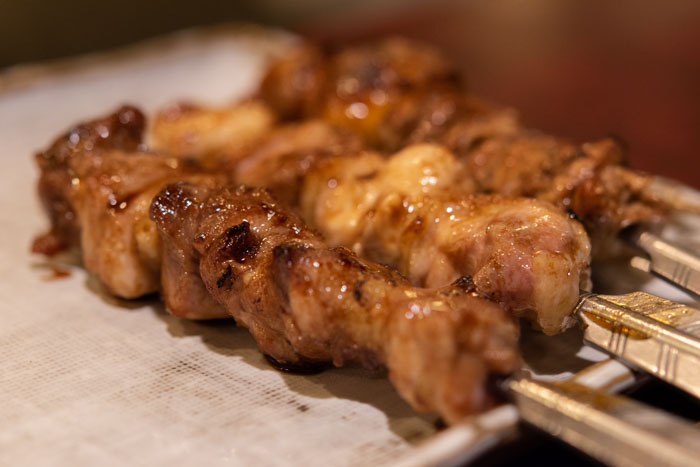
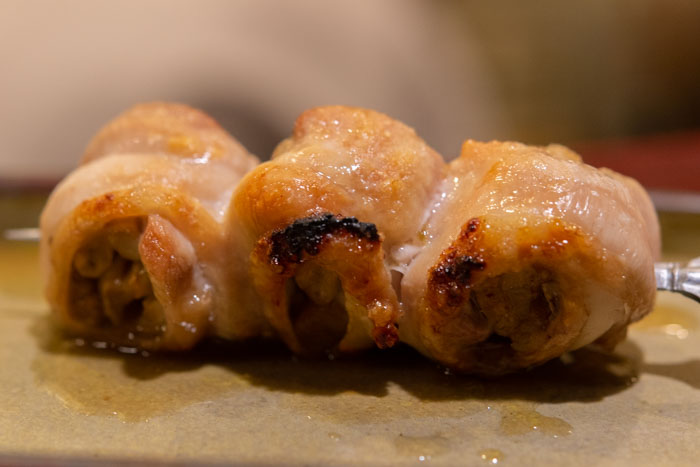
In addition, do not forget to try seasonable vegetables, such as:
- Japanese mushrooms
- Japanese Shishito green peppers
- Onions
Are you hungry yet?
There are some websites that can help you find nice restaurants in Japan, like Tabelog. Google Maps is also nice, and is used by locals and tourists, but is not as popular as Tabelog.
Where to go for Yakitori
Japanese people commonly eat Yakitori with beer or sake for dinner. There are a lot of izakaya places that offer good yakitori in Tokyo… but don’t get overwhelmed! We have some great recommendations for you:
- Doromamire (Yotsuya/Shinjuku area)
This cozy yakitori restaurant with only 30 seats is always packed with locals. They serve high quality chicken and vegetables, along with many fun alcoholic beverages to choose from, including sangrias. Reservations recommended. The average price is 5,000+ JPY per person.
- Torimitsu (Shinjuku)
You might be surprised to find this hidden gem in the middle of bustling Shinjuku. You will find only 10 or so seats in this warm and inviting restaurant that serves delicious yakitori. They serve a wide range of types of chicken meat, including chicken neck meat (seseri), and some other parts you have never imagined eating before! The price is also not too high, so this is a great place to eat in Shinjuku. Reservations are required.
3. Ramen
It goes without saying that there are A TON of ramen restaurants in Tokyo, and that Japanese people really love ramen. It’s cheap (you can get a decent one for 700 JPY or 800 JPY), filling, and tasty. There are multiple types of ramen based on the type of broth it has:
- Shoyu (soy sauce)
- Shio (salt)
- Miso
- Tonkotsu (pork bone broth)
- Others (oil-based, dried fish, etc.)
If you are not sure which one you like and want to try multiple types of ramen, go to Tokyo ramen street at Tokyo Station or the Ramen museum at Shin-Yokohama station to try them. The Ramen Museum is a good option as there are around 8 ramen restaurants selected from various parts of Japan there. You can try at least 2 or 3 different types of small ramen bowls!
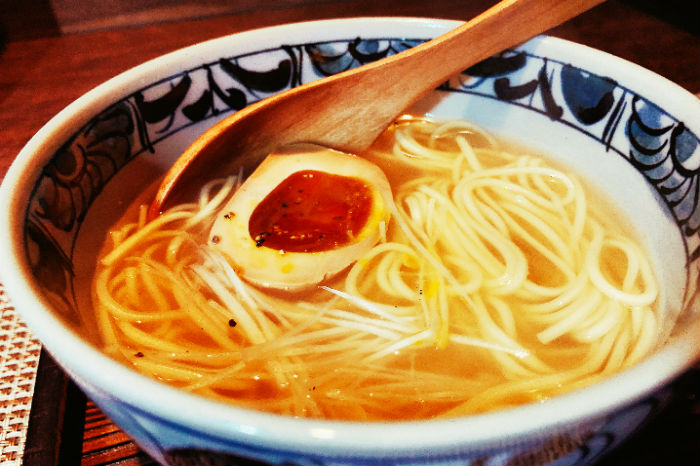
Where to go for Ramen
Since there are so many delicious ramen restaurants in Tokyo, this is quite the tricky one! We will give you some chain restaurants to start with, so let us know what you think by leaving a comment below.
- Ichiran (Most major stations in Tokyo)
You might have heard of Ichiran in other Japan food guides or videos before. Originally from Fukuoka, Japan, this pork-based (tonkotsu) ramen chain has been featured on Forbes and tons of other media. They serve authentic Hakata-style ramen in individual booths to help you focus on the flavors of the ramen. Ichiran’s pork broth is quite rich, but is also smooth and absolutely delicious. The noodles are thin, and people often get an extra portion of noodles while keeping the same broth (kaedama) for a second round.
- Nakamoto (Shibuya, Shinjuku and other major stations in Tokyo)
You may not think of Tokyo as a place known for its spicy ramen, but the spicy ramen at this restaurant is seriously addictive. They offer a wide range of ramen and tweak the spiciness depending on what you want on a scale of 0 to 10. To be safe, we recommend staring somewhere between the 4 to 6 range to be safe. This ramen chain originally started as a Chinese restaurant in Tokyo in 1991. There are now 19 locations with most located in Tokyo including Shibuya, Shinjuku, Ikebukuro, and Meguro.
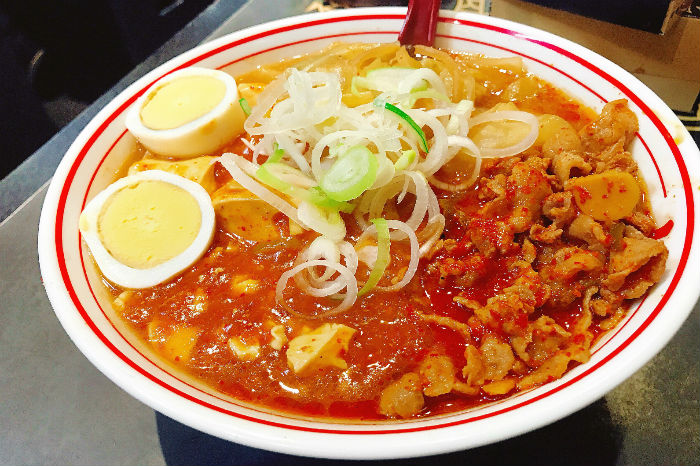
- Aburagumi (Shibuya, Shinjuku and other major stations in Tokyo)
Have you ever heard of oil-based ramen that has no broth? It may sound greasy and heavy… but I strongly recommend you try it at least once! At Aburagumi, they put their home-made ramen oil over ramen noodles with some toppings (e.g. grilled pork, scallions, and seaweed). You can also add some vinegar and chili oil and then stir well before you eat. It tastes surprisingly smooth and tasty! If you want to try something different, this restaurant is definitely worth a visit.
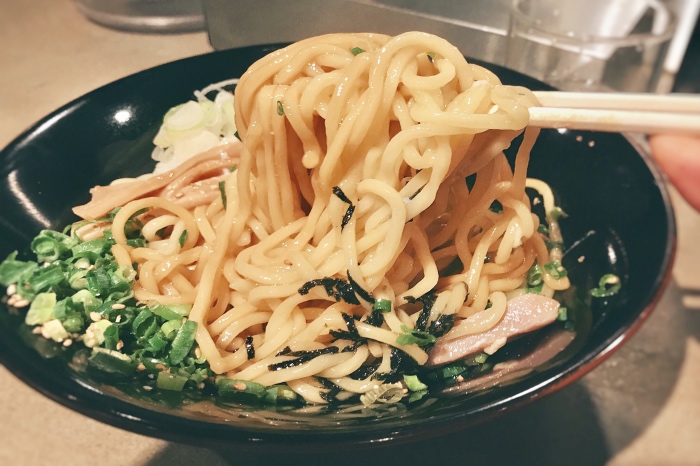
4. Okonomiyaki (Japanese savory pancakes)
Okonomiyaki is a popular dish in Japan, typically consisting of flour, cabbage, scallions, and pork belly slices. It is cooked on a big hot plate and served with a sweet and salty sauce made from soy sauce. It is a very easy dish to make, and people often cook it at home. However, there are a lot of restaurants that specialize in delicious okonomiyaki in Tokyo.
There are multiple types of okonomiyaki, depending on the region:
- Negiyaki: More scallions are added to pancake. Originally from the Kansai area (Osaka and Kyoto).
- Hiroshimayaki: Ingredients are layered rather than mixed together, different than in Osakan okonomiyaki. In addition, pan-fried noodles are added on top of cabbage and meat. This type is specific to the Hiroshima area (Western Japan).
- Monjayaki: Similar to okonomiyaki, various ingredients (cabbage, pork or other meats) are chopped and mixed together. The key difference is to add water or dash broth to make it more watery rather than making it a pancake. It used to be eaten as a snack mostly in Tokyo or Kanto area. At restaurants, you typically make the monjayaki on a skillet at your table. You’ll probably need to learn how to cook monjayaki beforehand, so take a look at this video!
Where to go for Okonomiyaki
- Kiji (Tokyo station and Shinagawa)
Originally from Osaka, this popular okonomiyaki restaurant always has a line during lunch hours. Each table has an individual grill to keep your meal warm.
The Tokyo Station location is pretty convenient, so this may be a good idea to eat as your last dish in Japan before flying out from Narita (or at Shinagawa Station if you are flying out from Haneda).
- Monja Kura (Tsukishima)
In Tsukishima in the Tokyo bay area, there is a street called Monja Street where there are 60+ Monjayaki restaurants. Kura is one of the most popular restaurants that serves good monjayaki in the area, and it is always crowded.
Make sure to give their signature dish, clam chowder monjayaki, a try! It sounds a bit strange, but it actually tastes really good!
5. Soba noodles
Have you only tried hot soba noodles? If so. you should definitely try cold soba noodles while you are in Japan. Soba is made from buckwheat flour, and the taste and texture is smooth and refreshing.
Soba is typically served with side dishes or toppings. It goes especially well with tempura (deep fried shrimp and vegetables) since soba is a light dish. The mix of light and refreshing soba with the warm juicy tempura is perfect!
By the way, it is completely fine to slurp your noodles in Japan. My mother actually used to tell me to slurp!
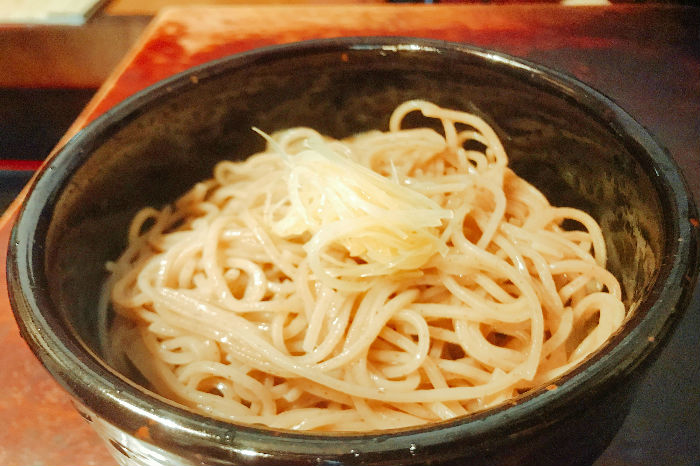
Where to go for Soba Noodles
- Yabu Soba (Ueno)
Yabu soba is not only famous for their handmade soba noodles, but also for their side dishes like rolled eggs, tempura, and eel. You might have to wait in line to get in, so go early if you can. Also, you will probably see some locals drinking sake while eating soba noodles during the day time. They have a good life.
- Fuji Soba (Major stations in Tokyo)
If you are on a budget, Fuji Soba, one of the major soba chains in Tokyo, is perfect for you. You can get soba noodles for as little as 300 JPY. They also sell tempura as a side dish at the counter.
So, are you hungry yet?
We would like to hear from you!
Whether you have questions or comments, leave a comment below and let us know what you think!

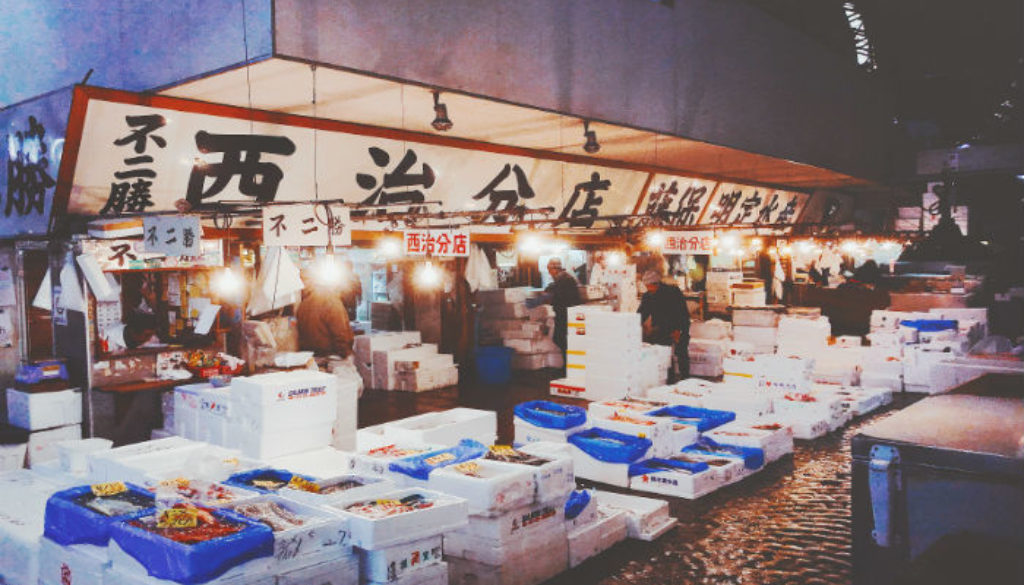
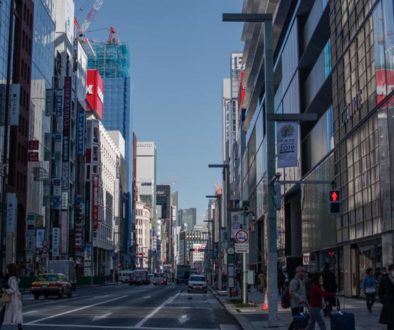
August 26, 2017 @ 11:58 am
Thank you for this article! I’m glad it’s so recent too. Visiting Tokyo briefly in the fall to start off my Japan trip. There’s so much I want to eat! I’m particularly interested in the oil-based ramen since I’ve never had it before. Going to take a look at your Kyoto tour too!
August 26, 2017 @ 6:02 pm
Thanks! It blew my mind when I tried the oil-based ramen for the first time in college. Not sure if you’ll love it or not but it is definitely worth a try.
I am also working on another article for Kyoto and it will be posted in the next couple of weeks (hopefully).
December 9, 2017 @ 11:29 am
It’s a shame you don’thave a donate button! I’d
most certainly donate to this fantastic blog!
I guess for now i’ll settle for book-marking andd adding your
RSS feed to my Goovle account. I look forward to brand new updates and will share this
website with my Facebook group. Talk soon!
September 27, 2017 @ 8:15 pm
Thanks for this post!
October 2, 2017 @ 3:31 pm
Hope it was helpful!
January 12, 2018 @ 12:15 pm
I like to eat Japanese Food very much, because in Japan, have a lot of delicious food, but I do not want to eat live food. I like salmon so much.
March 10, 2018 @ 10:55 am
I didn’t know that The Fish Market in Tokyo is the biggest fish market in the world. My husband recently went to Japan and returned with a new love for sushi. Since I don’t like sushi I am not aware of any good restaurants in my area. I guess to keep him happy I’m going to have to do my research and find one he loves.
March 26, 2018 @ 7:53 pm
Thank you so much I’ve learned so much that I can write in my group project.
April 8, 2018 @ 10:51 pm
Wonderful places you recommend. We’ve managed to get into one of them by now. there are loooong lines outside.